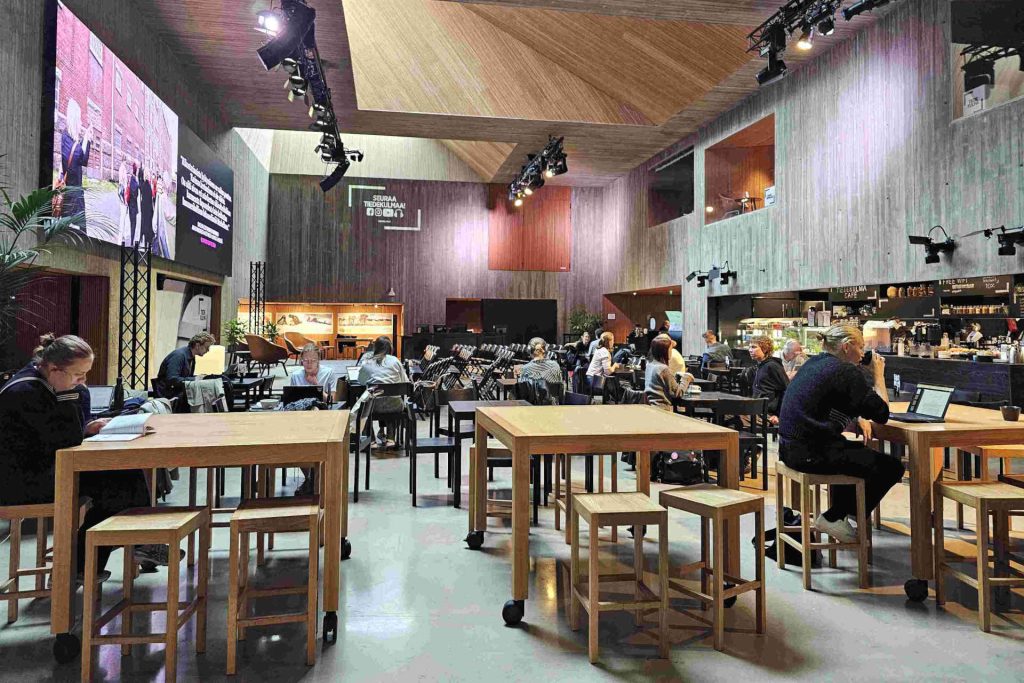
Communal catering is facing major challenges: Due to the increase in home office days, less food is being consumed in company canteens. On office days, however, employees’ expectations of the quality and ambience of the food are rising. This presents employers and caterers with financial and logistical hurdles, but also opens up opportunities for repositioning.
Communal catering is increasingly being used as part of the employer brand to retain and attract talent. Some companies, such as Google and SAP, cover the costs completely or rely on partnerships with neighboring restaurants or food courts that are used by several companies.
Sustainability and regionality are increasingly in demand, but many employees still opt for classic, often less healthy dishes such as pizza, currywurst, schnitzel and pasta. Digital solutions such as pre-ordering via QR code or automatic billing of goods via camera and direct billing to the employee account are already standard in canteens and make them pioneers in digitalization.
Service stations, petrol stations, train stations and airports are undergoing a transformation in the field of transport catering. In rural areas, petrol stations are increasingly replacing supermarkets and serving as local suppliers. Large providers such as McDonald's are planning to expand their presence. The multinational convenience store chain 7-Eleven (focus: vending, stores & smart stores at train stations and airports) is planning to enter the German market and is currently operating in Copenhagen as a test market.
Sustainability and practical packaging solutions also play an important role here, although the packaging law poses challenges. In the future, even reusable tableware and porcelain for in-house consumption could play a greater role. Overall, it is clear that catering and packaging concepts need to be rethought in order to meet changing working and living habits.

Imola is much more than just a race track: the city combines top-class cuisine, cultural monuments, and traditional producers to create an experience that delights connoisseurs, Italy fans, and curious travelers alike. From 2-star gastronomy at Ristorante San Domenico to creative pizza experiences and slow food osterie to historic libraries, palazzi, and award-winning wineries: this guide shows you the best places for cuisine, culture, and shopping—authentic, high-quality, and with real added value for your next visit to Imola.
The two-star Berlin restaurant Horváth returns to Vienna in early 2026 with an exclusive pop-up, presenting an uncompromising new menu based on “emancipated vegetable cuisine.” For two weeks, Sebastian and Jeannine Frank’s team will take over the Herzig restaurant and serve a 7-course menu that shows how innovative, precise, and luxurious vegetables can be today. A culinary highlight for foodies, fine dining fans, and anyone who doesn’t want to miss Austria’s most exciting pop-up experience of 2026.
This time, Sebastian Frank is taking an even more uncompromising approach, with a new menu and a clear message: vegetables can be luxurious – even without caviar.
With the opening of its new distillery in Mosbach, Aromahopping is sending a strong signal about the future of artisanal spirits. Between extraordinary gin compositions, creative tastings, and a high-caliber supporting program, it became clear what makes the Odenwald brand so special: attention to detail, curiosity about new flavors, and a passion for honest craftsmanship.


Communal catering is facing major challenges: Due to the increase in home office days, less food is being consumed in company canteens. On office days, however, employees’ expectations of the quality and ambience of the food are rising. This presents employers and caterers with financial and logistical hurdles, but also opens up opportunities for repositioning.